Posts tagged "health"

Yoga and Psychotherapy
Psychology and Yoga
 I have used psychotherpay techniques with Yoga students and many different Yoga techniques with psychotherapy clients over the past 16 years or longer. As both practices are concerned with improving individual quality of life and personal happiness and fullfilment, I see no conflict between the two.
I have used psychotherpay techniques with Yoga students and many different Yoga techniques with psychotherapy clients over the past 16 years or longer. As both practices are concerned with improving individual quality of life and personal happiness and fullfilment, I see no conflict between the two.
 Freudianism
Freudianism
Yoga and Freudianism were not the best of friends; but, more recent research suggests that we are not trapped by the past. We keep developing and changing with time. Our current understanding supports the possibility of personal growth and development.
American Psychological Association
The American Psychological Association has published a review of some favourable studies of Yoga used in psychotherapy. So slowly divergent world views start coming closer together. Each informs the other. "The evidence is showing that Yoga really helps change people at every level," says Stanford University health psychologist and Yoga instructor Kelly McGonigal, PhD. I have quoted from their article on my web page.
Meditation 'eases heart disease'
Researchers say heart disease patients who practise meditation have reduced death rates
The American Heart Association said they had assigned 201 African Americans randomly to meditate or to change their lifestyle for a nine year study.The research was carried out by the Medical College in Wisconsin with the Maharishi University in Iowa. The results shoe the meditation group had a 47% reduction in deaths, heart attacks and strokes. The research was funded by $ 3.8 million grant from the National Institute of Health and the National Heart, Lung and Blood Institute.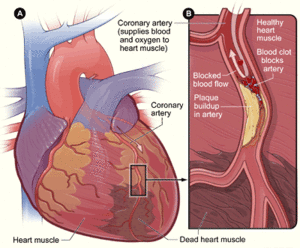
The benefits of Meditation
The average age of the men and women was 59 years and they all had a narrowing of the arteries in their hearts.
The group that practiced meditation did so twice a day for 20 minutes.The group that changed their lifestyle received classes in risk factors for heart disease, dietary modification and exercise. Besides the reductions in death, heart attacks and stroke in the meditators, they also had significant reduction blood pressure and psychological stress.
Apparently, this is the first controlled trial to show that long-term practice of meditation reduces the incidence of clinical cardiovascular events such as heart attacks, strokes and death. Dr. Schneider, lead author of the study, said that the effect of the trial was like adding a new class of drugs for the prevention of heart disease.
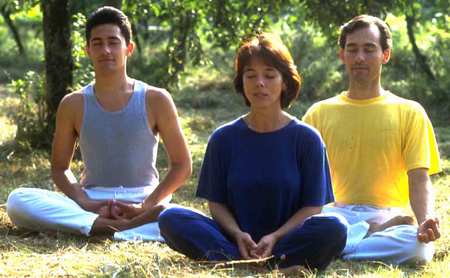
More Studies Needed
"However, in order to fully assess the differences …. meditation could have on heart patient's lives, we need to see research confirming it in a far bigger study and with other ethnic groups."
The Best Exercise for Healthy Bones
Healthy Bones?
A special section of Medicine & Science in Sports & Exercise, the journal of the American College of Sports Medicine detailed a continuing controversy in the field of sports science about exactly how exercise works on bone and why sometimes, it doesn’t. “There was a time, not so long ago,” when most researchers assumed “that any and all activity would be beneficial for bone health,” says Dr. Daniel W. Barry, an assistant professor of medicine at the University of Colorado, at Denver, who has studied the bones of athletes and the elderly.
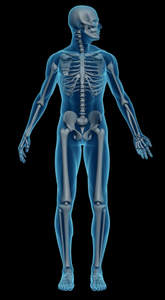 Recent Research
Recent Research
Recent findings are showing that competitive swimmers had lower-than-anticipated bone density, and that competitive cyclists sometimes had fragile bones and, finally, some studies suggest, that weight lifting did not necessarily strengthen bones much. Too much endurance exercise may actually reduce bone density. In a study by Dr. D.W. Barry, competitive cyclists lost bone density during a long training season. Dr. Barry says that it’s possible that exercise that is too prolonged or intense may lead to too much calcium loss through sweat. The endocrine system may interpret this loss of calcium as serious enough to start leaching the mineral from bone.
The Best Exercise
The current message about exercise and bone building may be that the best exercise is to simply jump up and down. "Jumping is great, if your bones are strong enough to begin with,” Dr. Barry says. “You probably don’t need to do a lot either.” (If you have a family history of osteoporosis, check with a doctor.) 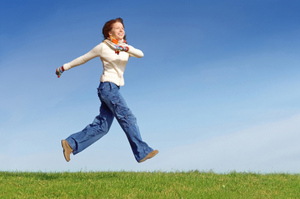
Hopping also aids in balance, which may be as important as bone strength in keeping fractures at bay. Dr. Barry says, “fragile bones don’t matter, from a clinical standpoint, if you don’t fall down.
Why Exercise Makes You Less Anxious
Exercise Creates new Brain Cells
Researchers at Princeton University recently made a remarkable discovery about how neurons respond differently to stress than to inactivity. Scientists have known for some time that exercise stimulates the creation of new brain cells (neurons) but not how, precisely, these neurons might be functionally different from other brain cells.
Exercise creates a Calm Brain
Preliminary results presented at the annual meeting of the Society for Neuroscience in Chicago, showed that experimental rats had created, through running, a brain that seemed biochemically, molecularly, calm when presented with stressful situations.
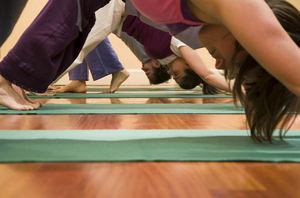
How Exercise Remodels the Brain
For years, it has been a given that exercise enhances mood. But how exercise might directly affect mood and anxiety — psychological states — was unclear. Now, thanks to improved research techniques scientists are beginning to tease out how exercise remodels the brain, making it more resistant to stress. At the University of Colorado, Boulder, scientists have examined the role of the neurotransmitter serotonin, considered to be the “happy” brain chemical. The view of serotonin has been undermined by this and other research. In those experiments, rats exposed to a laboratory stressor, showed increased serotonin activity in their brains. But those rats, that had run for several weeks before being stressed, showed less serotonin activity and were less anxious and helpless despite the stress.
Moderate Exercise reduces Effects of Oxidative Stress
Researchers have looked at how exercise alters the activity of the dopamine neurotransmitter in the brain, and on the antioxidant powers of moderate exercise. Anxiety in people has been linked with excessive oxidative stress, which can lead to cell death, including in the brain. Moderate exercise, appears to reduce the effects of oxidative stress. In an experiment at the University of Houston, rats whose oxidative-stress levels had been artificially increased were extremely anxious when faced with unfamiliar terrain during laboratory testing. But rats that had exercised, even if they had received the oxidizing chemical, were relatively calm under stress. When placed in unfamiliar circumstances, they didn’t run and hide, like the unexercised rats. They casually explored.
Positive Stress of Exercise
“It looks more and more like the positive stress of exercise prepares cells and structures and pathways within the brain so that they’re more equipped to handle stress in other forms,” says Michael Hopkins, affiliated with the Neurobiology of Learning and Memory Laboratory at Dartmouth, who has been studying how exercise differently affects thinking and emotion. “It’s pretty amazing, really, that you can get this translation from the realm of purely physical stresses to the realm of psychological stressors.”
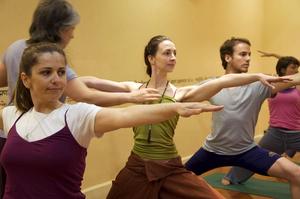
Don’t Quit, Keep Exercising
The stress-reducing changes evoked by exercise on the brain don’t happen overnight. In the University of Colorado experiments, rats that ran for only three weeks did not show much reduction in stress anxiety, but those that ran for six weeks did. “Something happened between three and six weeks,” says Benjamin Greenwood, a researcher in the Department of Integrative Physiology at the University of Colorado. Dr. Greenwood added that it was “not clear how that translates” into exercise advice for humans. We do not know how intense the exercise needs to be. Dr. Greenwood says, the lesson is “don’t quit.” Keep running or cycling or swimming or doing Yoga. You may not feel a magical reduction of stress after your class, if you haven’t been exercising. But the molecular biochemical changes will begin, Dr. Greenwood says. And eventually, he says, they become “profound.”
See the New York Times
Coffee drinkers develop less diabetes
Tea and Coffee
Tea and coffee drinkers have a lower risk of developing type 2 diabetes,according to new evidence. And the protection is may not form caffeine because decafinated coffee has the greatest effect. Researchers looked at 18 separate studies involving about 500,000 people. Results revealed that people who drink three or four cups of coffee or tea a day reduce their risk by 20%. Decaffeinated coffee reduces their risk by 33%.
Type 2 diabetes
Type 2 diabetes usually starts after the age of 40 and develops when the body does not produce enough insulin or the insulin does not work properly. The treatment usually includes a healthy diet, increased physical activity and medication. Each additional cup of coffee or tea consumed in a day cut diabetes risk by 7%. Instead of caffeine, other compounds in coffee and tea - like magnesium or lignans and chlorogenic acids - may be involved.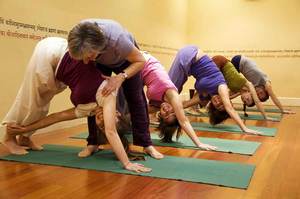
Lifestyle
"The identification of the active components of these beverages would open up new therapeutic pathways for the primary prevention of diabetes mellitus....If such beneficial effects were observed in interventional trials to be real, the implications for the millions of individuals who have diabetes mellitus, or who are at future risk of developing it, would be substantial." said Dr Victoria King, of Diabetes UK. "What we can be sure of is that the development of type 2 diabetes is strongly linked to lifestyle, which means that many cases could be prevented by keeping active and eating a healthy balanced diet that is low in fat, salt and sugar with plenty of fruit and vegetables."
How your Flexibility affects your Arteries
"Happy New Year Heart Attack"
Heart attacks are more common during the winter months than in any other season. A study of death certificates published in Circulation in 2004, confirmed the association of heart-attack deaths during the winter. The results were referred to as “The ‘Merry Christmas Coronary’ and ‘Happy New Year Heart Attack’ Phenomenon.”
Paschimotanasana Test of Your Arteries
Why heart-attack deaths surge during the winter holidays is not clear, but cardiologists have some informed guesses. A new study published in the journal Heart and Circulatory Physiology suggests, that there may be a way to test at least one element of your heart’s health right in your own home, right now. Sit on the floor with your legs out in front. Bend from the hips. Can you touch your toes? If you can, then your cardiac arteries are probably flexible.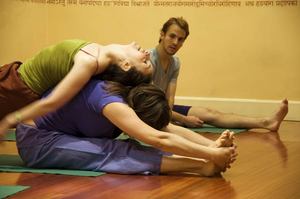
The study recruited 526 healthy adults between the ages of 20 and 83 and had them perform the forward bend test described above, and measured their extensions precisely. Researchers sorted the subjects into either the high-flexibility group or the poor-flexibility group.
Next, researchers estimated how flexible their arteries were. Supple arteries let the blood move freely. Stiff arteries make your heart work harder and over time could lead to a greater risk for heart attack and stroke, according to researchers at North Texas University.
Correlation if over 40
The researchers found a correlation between inflexible bodies and inflexible arteries in subjects older than 40. Adults with poor forward bends tended to have arterial stiffness. The study concluded that “a less flexible body indicates arterial stiffening, especially in middle-aged and older adults.” This correlation was not found in those under 40.
Arterial stiffening does not necessarily lead to arterial disease, Mr. Yamamoto says. Some arterial stiffening is inevitable with age; but the stiffer your arteries, the less efficient your heart is. Mr. Yamamoto says, that alterations in the composition of muscle tissues in the lower back could be occurring in the arterial walls at the same time.
Good News
The good news is that increasing your flexibility might somehow loosen up your arteries. That was the unreplicated finding of a small study at the University of Texas at Austin in 2008. The study examined whether weight lifting increased arterial stiffness. (It didn’t). The control group stretched. They were not expected to change cardiac function, but over the course of 3 months they increased the flexibility of their arteries by about 20 percent.
Mr. Yamamoto and his researchers are conducting a large study to determine how stretching affects the arteries. Until the results are in, Mr. Yamamoto says, it’s best to consider your flexibility as a probable indication of your arterial elasticity. “If you can touch your toes in the sit-and-reach test, your flexibility is good,” he says. Tight arteries are not necessarily diseased arteries; they’re just not fit.
Yoga
For those of you who practice Yoga regularly it seems I have just found another reason for you to keep it up. If you are new to Yoga now is a good time to start.
Yoga for Bad Ankles
Ankle Sprains lead to Bad Balance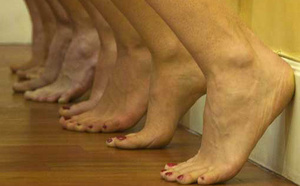
Back in the mid-1960s, a physician, wondering why his patients so often suffered one ankle sprain after another, asked his patients to stand on their injured leg (after it recovered). Usually, they wobbled badly, having to put their foot down much sooner than people who’d never sprained an ankle. With this simple experiment, the doctor made an important discovery - people with bad ankles have bad balance. What if you treat the balance problem, will it improve the ankle function? No one thought of this until now!
A New Treatment for Bad Ankles
That conclusion is only now making its way into the treatment of chronically unstable ankles. Patrick McKeon, an assistant professor in the Division of Athletic Training at the University of Kentucky, doesn’t really know why it has taken so long.
Most Common Sports Injury
They’re the most commonly injured body part in sports. Eight million people sprain an ankle each year in Europe. Millions of those same people will then go on to sprain that same ankle, or their other ankle, in the future. McKeon says, “The recurrence rate for ankle sprains is at least 30 percent, and … it may be high as 80 percent.”
Successive Sprains
Many of those second successive sprains could be avoided with an easy exercise. Stand on one leg. Balance for a minute and repeat. Sounds familiar? The Yoga tree pose.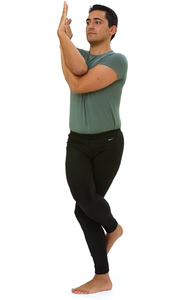
Balance Exercises
This balance exercise, is a well-documented approach to dealing with unstable ankles. A number of studies have shown that the treatment can be quite beneficial. Six weeks of balance exercises, begun soon after a first ankle sprain, reduced the risk of another sprain. The training also lessens, the chances of suffering a first sprain at.
Ankle Sprains Damage your Proprioceptors
Doctors thought that ankle sprains were primarily a matter of overstretched, traumatized ligaments. Tape the joint, relieve pressure on the sore tissue, and the ankle should heal, they thought. But that ignored the role of the central nervous system. “There are neural receptors in ligaments,” says Jay Hertel, an expert on the ankle, at the University of Virginia and. When you damage the ligament, “you damage the neuro-receptors as well. Your brain no longer receives reliable signals”. Your proprioception is impaired and you are more prone to falling over and re-injuring yourself.
Balance Exercises Repair the Proprioceptors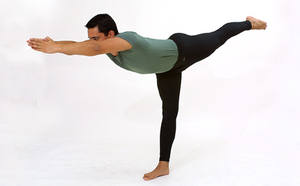
Some people wobble for about a month after an initial ankle sprain, and then it disappears; for others it may continue and become permanent. Researchers don’t yet know why. But they believe that balance exercises can return the joint and its proprioception to normal.
The Tree Pose
All you need to do is to practice the Tree pose two or three minutes a day, and when you find that too easy do it with your eyes closed and when that is not challenging then you can hop. If you want to advance even further then do the balance pose while standing on a pillow or more difficult variations that we teach at the Yoga Center Madrid.
A new reason to abstain
Alcohol and Conception
Apparently recent research indicates that for couples who wish to conceive, abstaining from alcolhol maybe very positive.
IVF
Studies of In vitro fertilization show that if a couple drinks over the course of one week the equivalent of half a bottle of wine their chances of a birth will be reduced by a quarter.
One beer a day?
Men who drank a beer daily contributed to a 30% lower chance of a live birth and a 38% greater chance of failed implantation.

